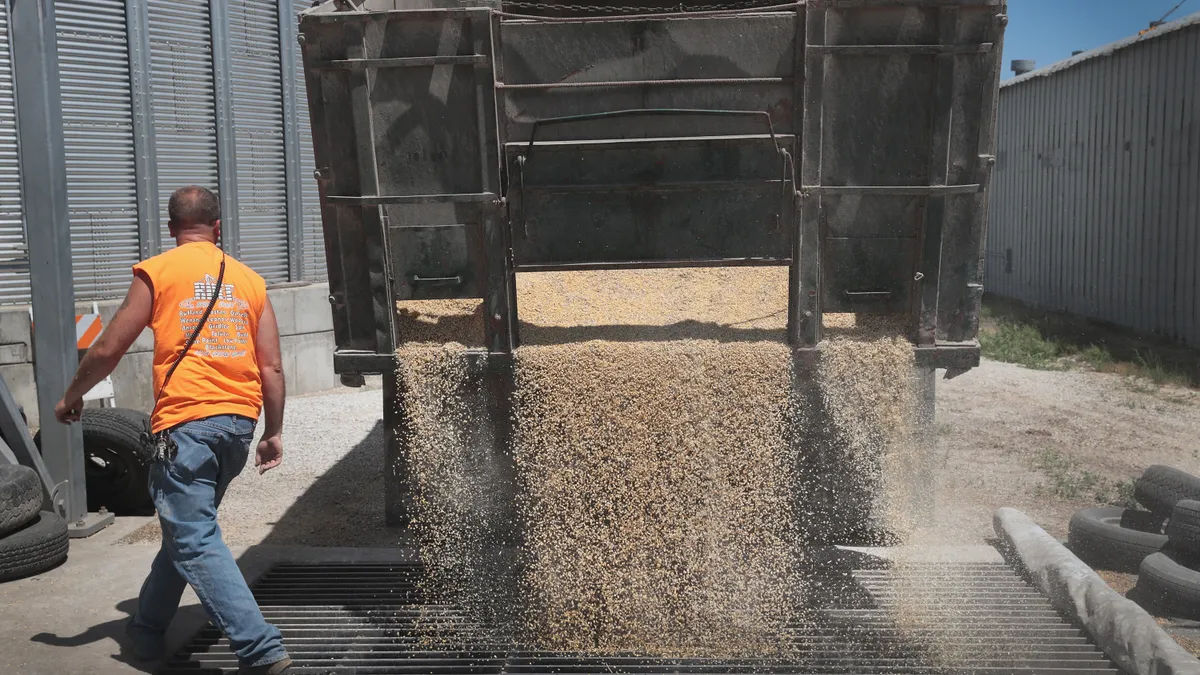The U.S. Department of Agriculture slashed expectations for soybeans on Friday in a surprise revision to its production outlook, potentially offering some relief to farmers who have struggled with surplus crops and low prices.
Soybean production is forecast at 4.46 billion bushels, down 3% from USDA's October forecast. Yields are expected to average 51.7 bushels per acre, a decline of 1.4 bushels from the previous forecast.
"That's a pretty big change from October to November," said USDA economist Seth Meyer, who estimated it was the biggest change over those two months since 2012, a major drought year.
The USDA also slightly revised its forecast for corn, lowering production estimates by less than 1% to 15.1 billion bushels. The average yield is expected to reach a record 183.1 bushes per harvested acre, down 0.7 bushels from the last forecast.
Expectations for a record harvest have tempered prices for U.S. corn and soybeans, contributing to tighter farm profit margins. Even with the revisions, farmers are in for a bumper harvest that will keep prices down overall.
Soybean production is still forecast to be 7% higher over 2023, with yield up 1.1 bushels from the previous year. While corn production is expected to be down 1%, yields are up 5.8 bushels from last year.
Those production numbers are expected to go down in the record books: U.S. soybean production and yield forecasts would be the second highest in history. In corn, record yields would contribute to the third-highest production total.
Those rankings are lower than previous USDA forecasts. Previously, the department expected soybean production at a record, with corn production reaching the second-highest in history.
Markets moved slightly higher in reaction to the news, with Meyer saying corn increased by 3 cents and soybeans improved by 5 to 6 cents. However, market response was "moderated" with crop supply still plentiful.
"On the bean side, [there was] a pretty late season yield surprise," Meyer said, "but was still a plentiful carryout, which is really going to temper the market's ability to push those prices higher."
The projected U.S. season-average farm price for soybeans was unchanged at $10.80 per bushel. However, as soybean prices in Brazil begin to rise, U.S. commodities have become more competitive as harvest starts to conclude. Additionally, higher palm oil prices due to trade restrictions in Indonesia have made U.S. soybean oil a more attractive alternative.











